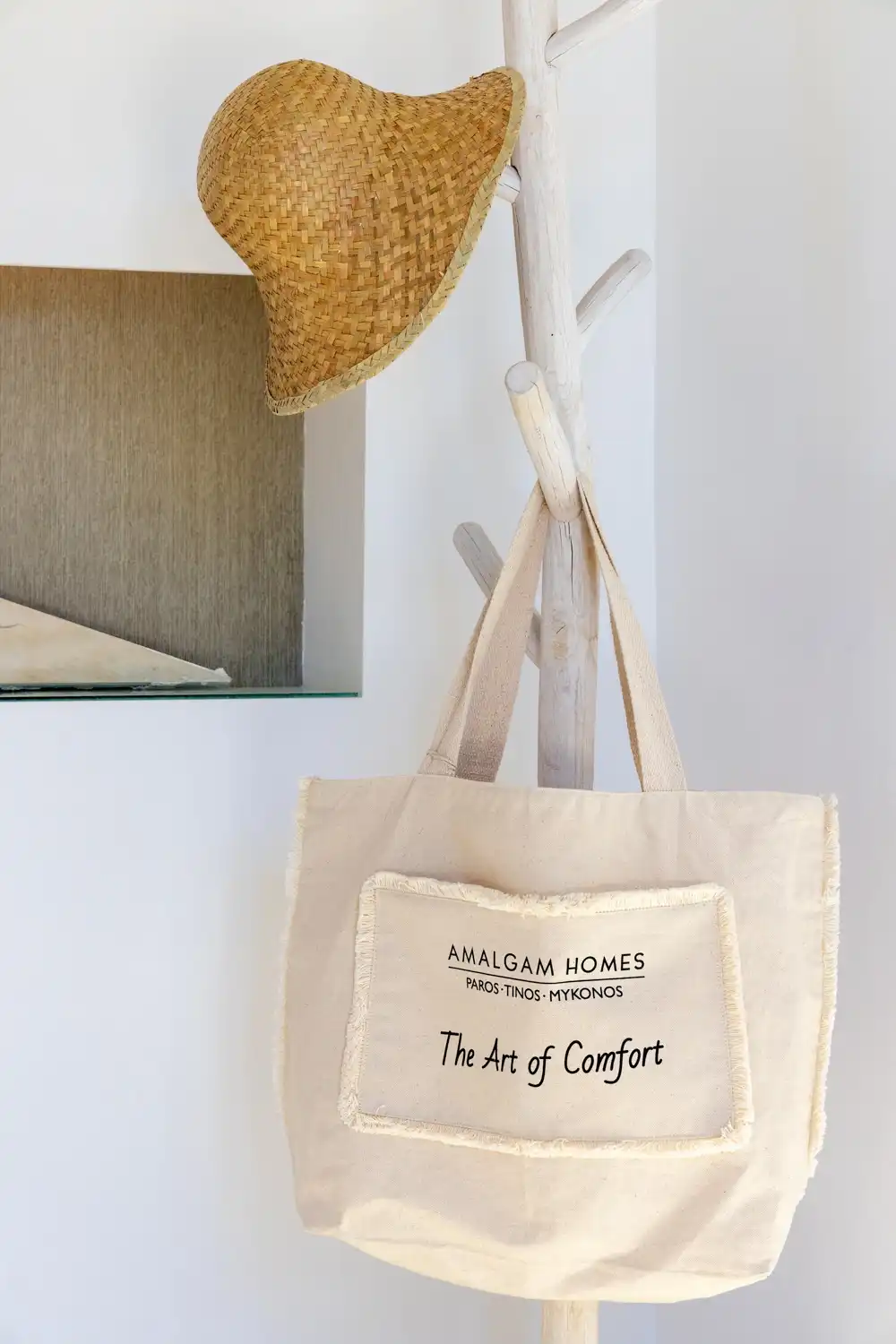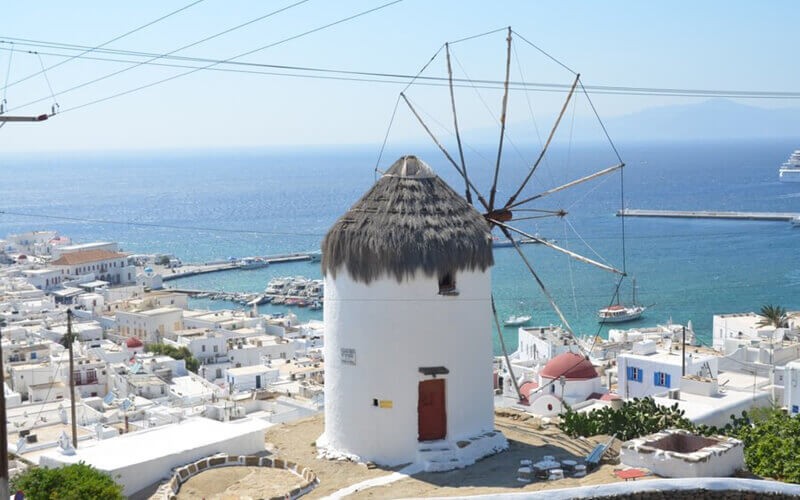The second part of the Folklore Museum is the Agricultural Museum at Boni’s Mill. Boni’s Mill is possibly a building of the 16th century. It is located in the outskirts of Chora and is one of the so-called Upper Mills, while its name is now also the place name. It once belonged to the Boni family, a family name with Venetian and Cretan roots.
The Folklore Museum of Mykonos acquired this windmill in 1962. It embodied the idea of an outdoor museum and included as exhibits the Mill of Boni and some newer additional rural facilities in the surrounding area (threshing, pigeon, oven) in an attempt to highlight some of the agricultural activities and habits of the islander farmer. The threshing floor, the mill and the oven are the three facilities that compose the processing wheat-flour-bread chain, which for centuries provided to the Myconian citizen his most important food, bread.
In Mykonos Agricultural Museum there is also the miller’s home, the treadle, the mangano well, the pigeon house, as well as groups of tools and pre-industrial or early industrial era machines that take operational positions in existing agricultural museum facilities.
The space is ideal for tour but also for panoramic pictures with the traditional settlement of Mykonos as a background.
“Lena’s House” is one of the Folklore Museum of Mykonos’ parts and operates as autonomous unit. The House is located in the Central District of Chora, “Tria Pigadia”, and was donated in 1970 from Mykonian citizens George and Ioanna Drakopoulou. It is a single-storey building of the 19th century where guests can discover a typical middle class Mykonian house of that era.

